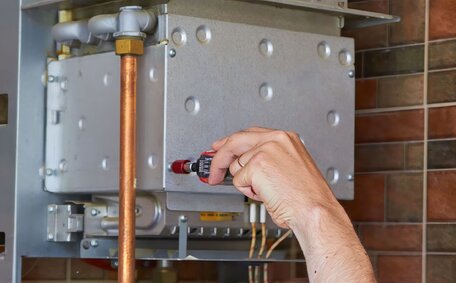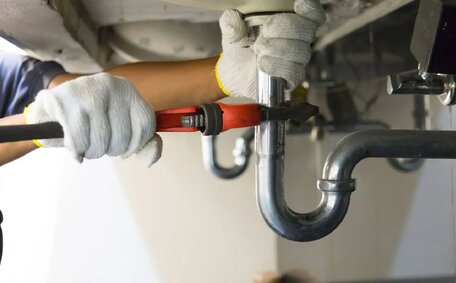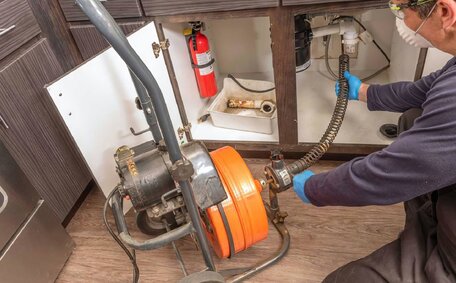Introduction: When and Why to Use a Plunger on a Clogged Drain
Blocked drains are a frequent issue in Australian homes. Before engaging a professional, applying hot water can ease the clog, aiding the plunger in dislodging the blockage as the first and most affordable solution to try.
A plunger creates suction to remove sink clogs from hair, soap scum or grease, restoring free-flowing water in your pipes. For a stubborn clog in your shower drain, using a plunger over the drain, as well as employing the above methods, can often offer relief.
Studies show that plungers and drain augers clear over 75% of home clogs, thus potentially eliminating the need for harsh chemical solutions or expensive plumber interventions.
If a plunger fails to unblock your drain after repeated efforts, enlisting drain augers, such as a power auger, helps in targeting larger blockages nestled further down pipe systems.
Utilise DIY methods like boiling water or a baking soda and vinegar mix to clear your drain before considering a professional plumber’s drain snake.
Preparing to Plunge: Draining Water and Sealing Overflows
Prepare thoroughly to unclog drains effectively, ensuring the plunger is optimally effective against material like accumulated hair.
Drain Excess Water
Begin by removing excess standing water from the sink or tub with a cup or bucket. Removing excess water ensures optimal plunger performance during unclogging, by keeping the plunger’s seal tighter on the drain opening.
Seal the Overflow
Seal overflow holes with a damp cloth or stopper to maintain pressure and prevent overflow during unclogging.
Sealing overflows halts water from surging up and out, fostering suction strength to dislodge the clog. Covering both overflow and drain openings is essential to effectively clear clogs.
Plunging Technique: Creating a Tight Seal and Using Quick, Forceful Motions
Knowing the correct plunging technique is pivotal for unclogging a drain in protecting your pipes and effectively clearing clogs. The essential approach is to form a tight seal around the drain which, when coupled with rapid plunger pumps, will break up clog assemblies with ease.
Create an Airtight Seal
Begin by donning rubber gloves and moistening the plunger to enhance the seal on your drain’s blockage. If your sink still seems clogged, press down firmly until the rubber cup makes contact all the way around the drain perimeter.
An airtight seal prevents water and suction from escaping upwards. Leaks reduce plunging power below the clog.
Use Rapid, Forceful Motions
Once sealed, press the plunger straight down with moderate force. Then immediately push down and pull back upwards with the vigor of a proficient drain snake. these rapid, forceful motions generate strong suction below the drain.
Use a consistent plunging motion, at a rhythm of once per second, to sustain the necessary force. Sustain pressure as this action often does the trick until clog resistance subsides, indicated by the successful movement of water down your pipe. You’ll need to unclog your drain for a longer duration of 5-10 minutes when tackling serious blockages.
Avoid twisting or angling the plunger - only vertical motions generate the required force. Be forceful but careful not to bend or dislodge the drain stopper.
Troubleshooting by Drain Location: Unique Aspects of Sink, Tub, and Toilet Drains
Tailor your plunging method based on the specific drain you aim to unclog.
Sink Drains
A sink plunger, with its flat cup design, is ideal for various drains, providing a tight seal for most sink openings. When plunging your kitchen sink, brace your other hand on the bottom of the basin to keep the plunger stable and avoid bending the drain pipe during the plunging process.
Tub Drains
Bathtub drains have an open crossbar design underneath that may allow some water to escape. Wrap a washcloth around the crossbar before using the plunger. Apply extra downward force when plunging as tub drains often have deeper P-traps.
Toilet Drains
For a blocked toilet, consider a closet auger when conventional methods fail, as an alternative to a flat-cup plunger. Tilt the plunger slightly backwards, submerging its bell in water to prevent air leaks and maintain suction.
Regardless of drain clogs, ensure to follow the correct rapid plunging technique for effective dislodgement. Household items or drain cleaners may offer temporary solutions if you lack a suitable plunger.
Natural Home Remedies: Baking Soda, Vinegar, Boiling Water
Before contacting a professional, try several natural strategies for clog prevention:
Baking Soda and Vinegar
Tip one cup of baking soda then vinegar down the drain to dissolve tough clogs. The effervescent action can clear clogged pipes of accumulated grease and organic materials. Cover the drain for 5-10 minutes before flushing with hot water.
Boiling Water
Boiling water with dish soap can melt and displace grease in sink pipes, unclogging them. When dispensing solutions into your sink, take precautions for safe handling without rushing, giving the mix adequate time to prevent splash back.
Pour boiling water carefully into the drain, using its heat to effectively clear blockages. Repeat a few times, giving the hot water time to work its magic in the pipes, and let it sit for several minutes between each pour.
Find out the right way to unclog with home remedies, careful not to damage your plumbing with too much force or harsh chemicals. If clogs persist, it may be time to engage your local professional to inspect pipes and ascertain the issue.
When to Call a Professional Plumber
Should a plunger, boiling water or DIY solutions fail to clear a blocked drain, it may be time to consult a professional plumber.
Indications You Need a Pro
There are several signs that indicate your clog requires professional equipment and expertise:
- Water meanders down drain, accompanied by gurgling or bubbling sounds
- Standing water lingers longer than a few minutes after plunging
- Unpleasant sewage odours are noticeable
- Multiple drains in your home may be sluggish or experience a complete back up
- You have attempted drain cleaners, augers, and other DIY methods with no success
Armed with various cleaning tools, including a wire coat hanger, plumbers use a hand crank auger and other equipment to tackle tough obstructions, such as tree roots, and address sink blockages and drain issues, clearing even the most stubborn clogs that DIY efforts cannot resolve.
Benefits of Calling Dulwich Hill Plumbing
Our guide offers insights into tackling plumbing problems, with expert plumbers available any time to address blocked drain emergencies promptly. Leveraging state-of-the-art CCTV technology, we scope out the issue, ensuring our services match up our high standards for fast and efficient clog resolution.
We also get right to complete plumbing services including:
- Hot water system repair and installation
- Burst pipe and major leak repair
- Toilet, tap and valve replacements
- Gas line inspections and rectification
- Drain cleaning, repairs and maintenance
Boasting over 25 years of expertise, we can get to the crux of the problem instantly, consistently. Call 1300 349 338 or email [email protected] for urgent plumbing assistance.






